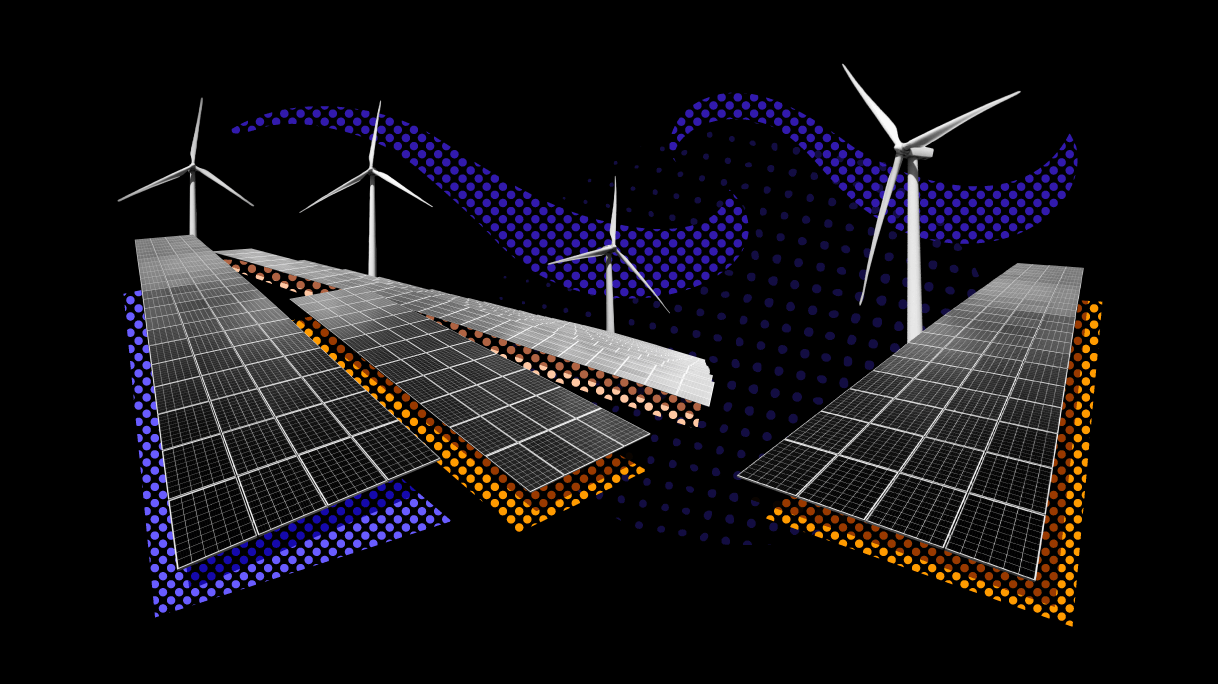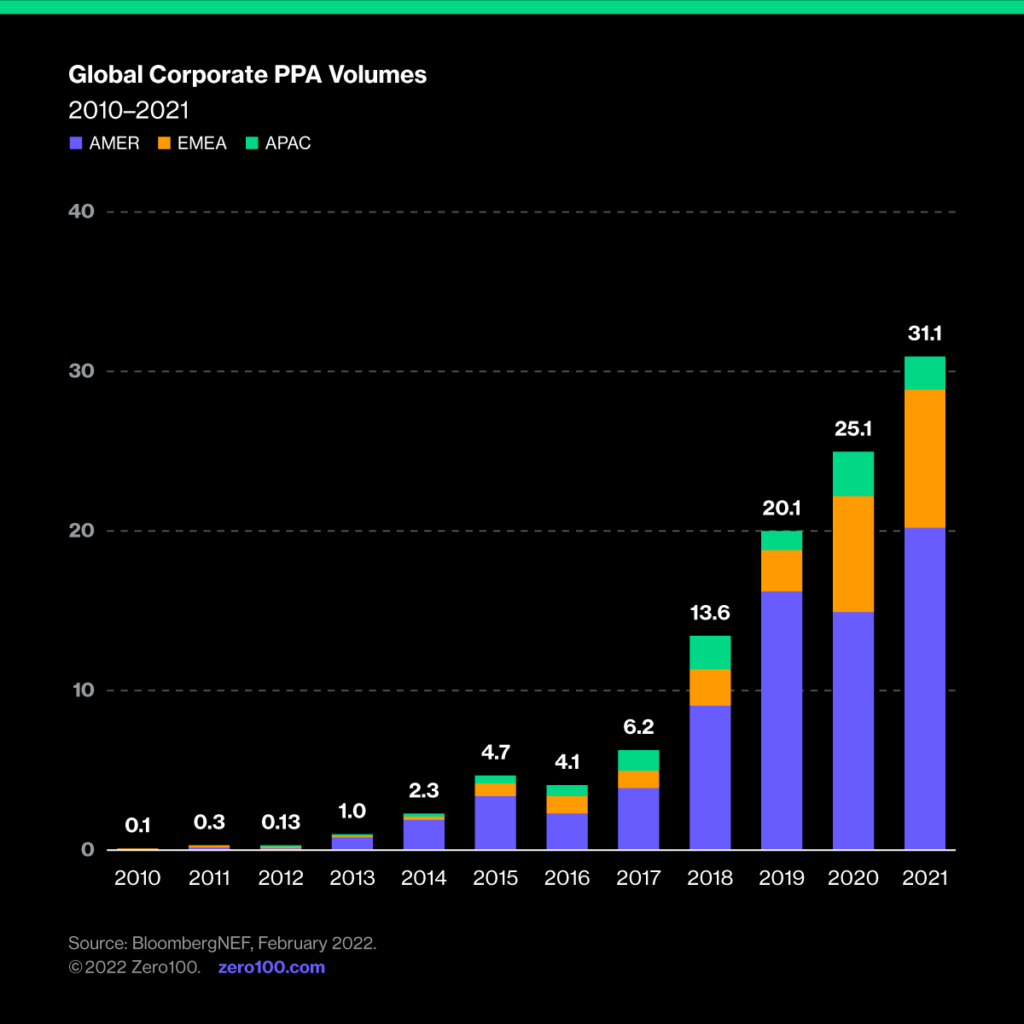
Walmart and Schneider Electric: Democratizing Renewable Energy with Everyday Tech
Supply chain leaders accountable for GHG commitments have a problem: they don’t usually generate their own energy. Gigaton PPA not only makes renewable power easier to procure but brings benefits Walmart.
Companies everywhere are scrambling to figure out how they'll meet greenhouse gas emissions commitments they've already made. Unfortunately, supply chain leaders—who own the lion's share of accountability for getting it done—have a problem: they don't usually generate their own energy. They buy it, and that means finding ways to use their purchasing power to influence a cleaner energy mix that powers their operations. Walmart and Schneider Electric have an answer: The Gigaton PPA.
Digitize to Decarbonize the Easy Way
Walmart has been aggressive about sustainability for a long time now, and this new program is a big step forward in terms of shifting from leading by example to leading by enabling others to piggy-back on a good idea. The Gigaton PPA is part of Walmart's Project Gigaton launched back in 2017 and invites Walmart suppliers to join in collective action. It is also part of Schneider Electric's massive push to help companies scale their use of renewable energy, and a showcase for Danish renewable power company Orsted who is building the Kansas wind farm that will provide power.
The mechanism is simple. It is a purchase power agreement (PPA) that allows participants to buy in to a long-term (12 years in this case) supplier/buyer commitment for energy. Participants at this early stage already include Levi Strauss, J.M. Smucker Co., and Valvoline, among others. For sourcing people this probably feels as natural as falling out of bed. And, for companies whose sales leaders want to curry favor with Walmart, the first step is simply to register interest on Retail Link, the well-established digital supplier portal that feeds the world's biggest retailer.

Complexities around estimating energy loads, understanding price protections and risks, and otherwise getting smart about how to seriously scale up renewables in a power portfolio are handled by Schneider Electric who will assign a rep. If it sounds like a sales pitch, that's probably because it is, but it's a pitch for something that's needed, especially for supply chains who have already promised to cut Scope 3 carbon and aren't sure how to do it.
Renewable Energy Feeds Directly Into Sourcing
Walmart's genius in this case is taking the pressure it feels to decarbonize by driving straight back into the starting point of everyone's supply chain: sourcing. NGO's, regulators, investors, and customers have been adding pressure about climate change for a long time, but too much of the response from business has come from corporate communications. Sustainability reports have gotten steadily deeper and better over the years, but they still get tagged (often unfairly) as greenwashing by an uninformed public.
Pilot projects to put solar panels on the roof or divert waste away from landfills have mostly failed to create serious change because they've overlooked the chance to convert purchasing power into clean energy. Digitally driven demand for regenerative supply chains will work best through digitally powered sourcing. Gigaton PPA is one answer to this golden opportunity.
PPAs are nothing new, with both solar and wind PPAs well established for businesses looking to buy green energy. The problem has been that PPAs are relatively complicated to manage and hard to convert into customer goodwill since decarbonization benefits are only visible if customers take the time to read your sustainability report.
Also not new is the idea of big energy users stepping in to directly source renewable energy, like Amazon's construction of wind and solar farms starting in 2015, or Google's decade-old strategy to diversify its power portfolio with everything from wind and solar to hydro and geothermal often feeding directly into their power-hungry data centers. The problem is that for businesses without the resources of a Google, Amazon or Walmart building your own is a capex non-starter.
Click to Buy Green Power
Gigaton PPA is exciting not only because it makes renewable power easier to procure, but because it also ties decarbonization directly to making a big customer (i.e., Walmart) happy. Supply chain may be the natural owner for decarbonizing operations, but wouldn't it be nice to have the sales folks on board?
Critical Reading
THE NEW YORK TIMES
Weary of Snarls, Small Businesses Build Their Own Supply Chains
Commentary: To combat pandemic induced blocks and reinvigorate a struggling business, ObVus, a producer of ergonomic office equipment, shifted their supply chain – starting at materials sourcing – in house. Many small companies are adopting similar strategies.
#reshoring #sourcing
TECH CRUNCH
Pantheon Design Alleviates Supply Chain Uncertainty with Factory-Grade 3D Printing
Commentary: For a long time, 3D printers have been too expensive and unreliable to be considered a viable manufacturing solution. Pantheon Design, a maker of industrial 3D printers founded by engineers, is changing the game by building faster, more robust, machines.
#3dprinting #manufacturing
BUSINESS WIRE
Commentary: On a mission to create a more sustainable global food system, Apeel is coupling advanced imaging technology with machine learning to mitigate food waste and ensure consumers are receiving consistently high-quality produce.
#technology #foodwaste